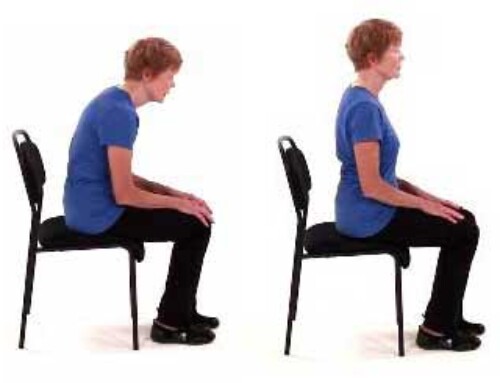Breathing
An often overlooked underlying contributor to muscle and joint pain can be dysfunctional breathing patterns. When we look at breathing we look not only at the rate, but also the quality of breath. The diaphragm, which is located below the lungs, is the primary respiratory muscle. When you inhale, the diaphragm contracts and flattens, creating a vacuum pulling air into the lungs. The diaphragm also helps to control intra-abdominal pressure, as well as to help control gastroesophageal reflux.

It’s common in patients with muscle and joint issues, as well as in the general populace that the diaphragm is no longer being used effectively for the purpose of breathing. You can get an indication of the way you breathe by simply putting one hand on your chest (ribs) and another on your abdomen at your belly button. If you do this test, do you find that your abdomen moves and your chest remains still? Or is it the other way around? If your chest moves, and your diaphragm doesn’t, you may have a dysfunctional breathing pattern. Other things to look for include breathing rate at rest of less than 16 bpm, and a decreased breath hold time, among other technical tests used to measure carbon dioxide level upon exhalation (capnography). Other signs can be tension in the accessory respiratory muscles such as the scalenes, sternocleidomastoid, trapezius, pectoralis major, and intercostals.
Some studies have shown an increased risk of low back, neck, and shoulder conditions with dysfunctional breathing patterns. At our office, we look to screen for these patterns on your initial assessment, so if we see this pattern prevail, your breathing pattern we will likely need to address this pattern as part of your treatment plan. Most often, you will be given exercises to help recruit the diaphragm and improve breathing.
The link between dysfunctional breathing and injury is still being studied and researched. Because the diaphragm is important in regulating intra-abdominal pressure, it’s likely that the diaphragm is no longer doing its job effectively in these patients. Because the diaphragm works in conjunction with the core, decreased or abnormal intra-abdominal pressure prevents the core from working effectively, creating instability, and abnormal muscle recruitment patterns. If this mechanism is no longer working properly, there may be increased loading and compensation patterns at play. In addition to instability, abnormal breathing leads to increased recruitment of accessory respiratory muscles such as the scalenes. Overuse can create muscle tension, tightness, and shortening in these muscles.
Improving breathing is an often overlooked treatment that can have surprising benefits for patients. As an example exercise, I have included a link you can click on with a great beginner breathing exercise. If you like it, please share it with a friend you think could benefit.
Access Code: YPY6Y8G7
URL: https://coasthealth.medbridgego.com/
Date: 02/02/2022
Prepared by: Dr. Linn
Exercises
-
Diaphragmatic Breathing at 90/90 Supported – 3 x daily – 5-7 x weekly – 5-10 minutes



